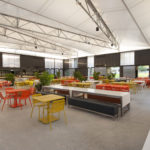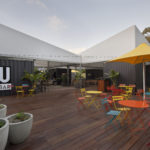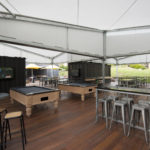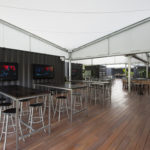Company:
Fabritecture (UFS Australasia Pty Ltd T/A Fabritecture) Varsity Lakes, QLD
Project Details
Fabric 1
Serge Ferrari 502 PVC in White
Producer:
Serge Ferrari
Supplier:
Serge Ferrari
Engineer Company 1
Wade Engineering
Design Company
Architectus
Architect Company
Architectus
Subcontractor Company
Fabritecture
Project Manager Company
Fabritecture
Installation Company
Fabritecture
Please describe the project specifications
Macquarie University Campus Common needed a temporary solution to provide students with a place to eat & hang out while the existing eating area was under construction. Our scope was the design & construction of a series of 11 container-mounted architectural awnings to cover a new temporary dining facility for the students.
The design involved 6 market structures, 1 larger 30m x 30m ‘main’ structure, and 4 awning structures. The main structure was required to have an internal environmental control system for temperature regulation inside. The intention of the design was to create a temporary solution that allowed for the structures to be easily dismantled and relocated in 5 years.
What was the purpose of this project? What did the client request?
The purpose of this project was to solve a dilemma that the client was faced with: Macquarie University’s current dining amenities were going to be demolished and redeveloped into a first-rate culinary experience for it’s students.
The new dining area was going to take a few years to complete construction, so in the meantime the Uni needed a functional and temporary solution. The client requested that these semi-permanent facilities be attractive yet cost-effective and could cater to the demands of a busy student eatery.
The client also requested a design that could be easily dismantled once the construction of the new dining area was completed. The final design was a series of relocatable architectural structures, featuring 1 large 30m x 30m main structure, 6 smaller structures, and 4 awnings.
All the structures were designed to fix to shipping containers by a specifically design bold connection. This connection utilised the corner casts of the containers, simplifying the dismantle and re-use of the structures at a later date. The chosen design meant that the structures could be used for future use once the temporary student hub is no longer required.
What is unique or complex about the project?
In order to be able to cover larger areas, each 9m x 9m market structure was designed as a single unit that could be adapted and joined together. The entire roof structure is supported on double-stacked shipping containers that act both as foundations and walls.
The main structure was a large 30m clear span design with a unique saw tooth ridge and valley roof shape. Six identical modules were used for the smaller market structures, connecting in different relation and orientation to each other to form one continuous cover. For these six models, the steel and fabric were 100% pre-assembled away from the construction zone at ground level. The completed pieces were then lifted onto the containers to reduce working at heights and speed up the client’s overall program.
The air gap between the liner and the external roof fabric is a 750mm deep cavity. The design of this internal liner however is very clever as it offers a seamlessly polished finish from the inside of the structures. The roof cavity assists with insulation and environmental internal control and lowers the heat inside the building. The water drainage and sump system is completely hidden inside the cavity.
Another part of the internal environmental control requirement, specialised custom roof vents were installed. The truss design was split in two, to create the illusion that the internal liner is the roof fabric when standing inside the structure.
Complex gable infills and weather flap details were provided by the geometry of the steel and its attachment the containers. Connection to the containers is achieved through the specially designed bolted connection, which worked brilliantly.
The 4 awning structures were originally designed as a polycarbonate roof. With our design guidance and change to a fabric roof, the steel frame weight was reduced by over 50% resulting in a more cost-effective product that the architect was extremely happy with the outcome of.
All the structures sit on top of stacked shipping containers, connected only through bolted connections, to allow for easy dismantling in around 5 years at the end of use. The entire project took 2,566 man hours to complete.
What were the results of the project?
The Macquarie University Campus Common project is an example of how innovative and versatile fabric architecture can be! Fabric architecture can be designed as a practical solution for almost any application.
The client and the architect were looking to create an on campus experience for the students that was a unique, friendly and fun place to go. It was important to provide students with a true university experience while the food hall redevelopment was under construction.
The completed project looks amazing! All of the details worked well together, and the client was very happy. The structures met the needs of the client and the students.
Content is submitted by the participant. IFAI is not responsible for the content descriptions of the IAA award winners.
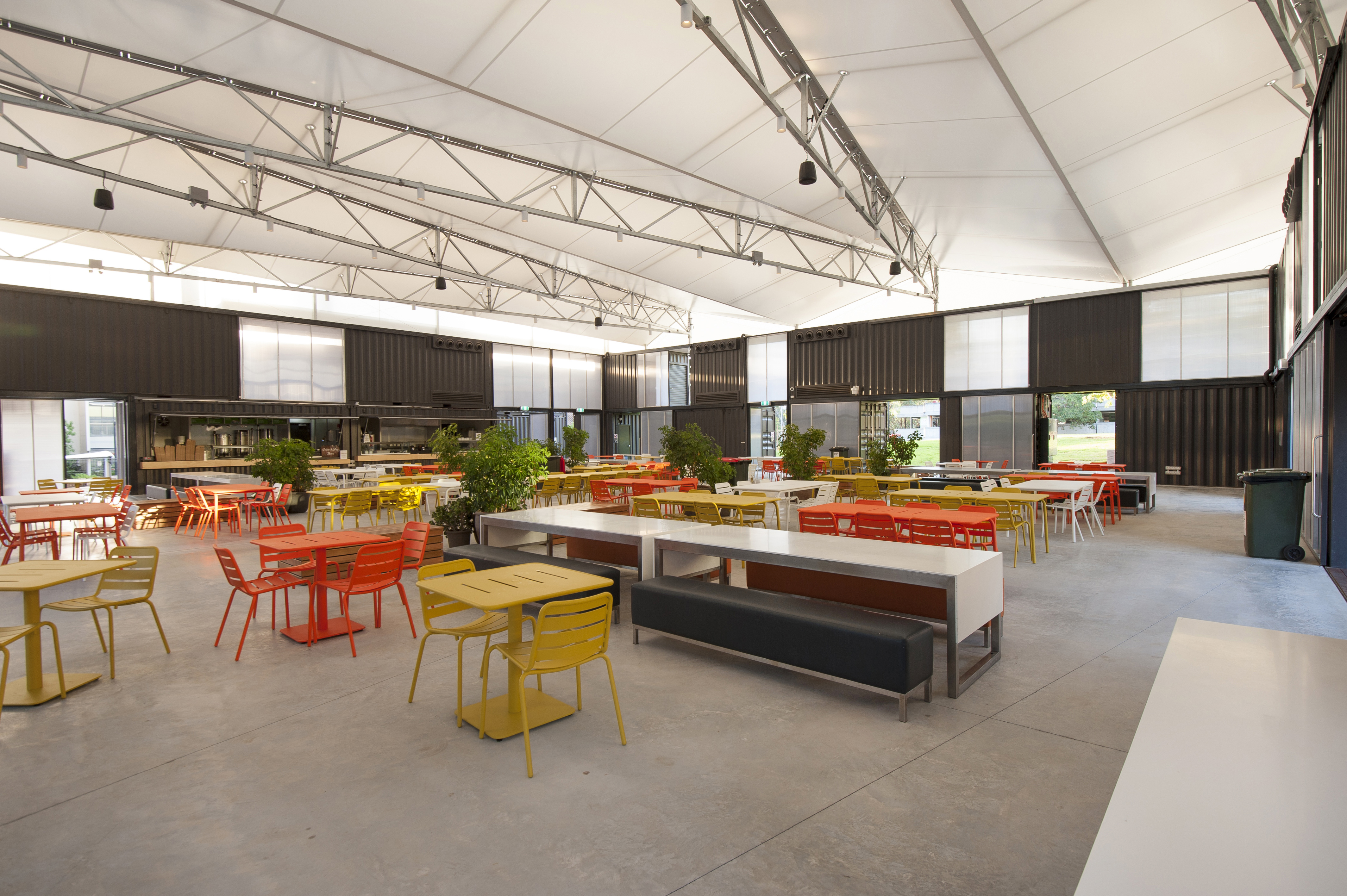
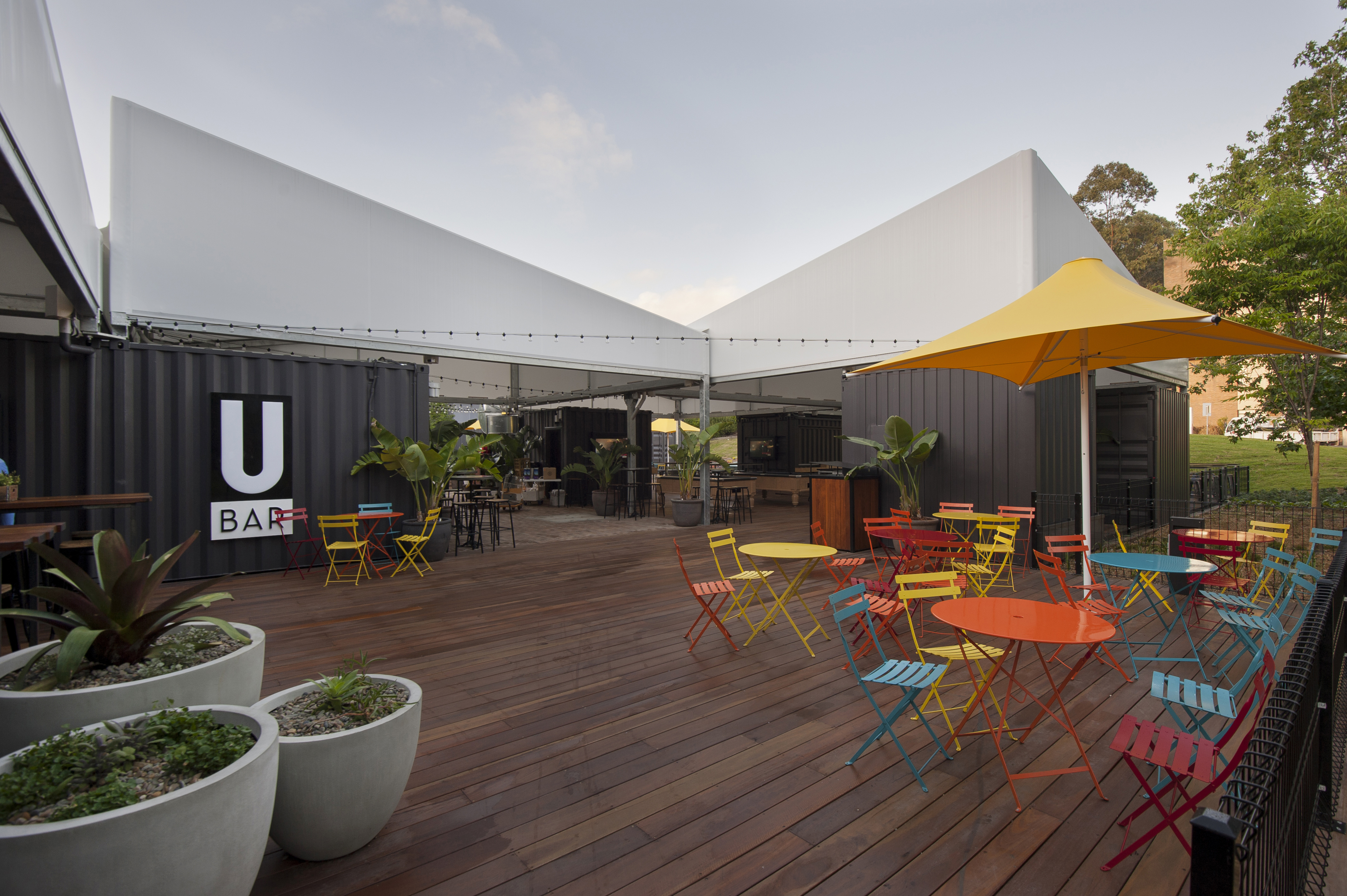
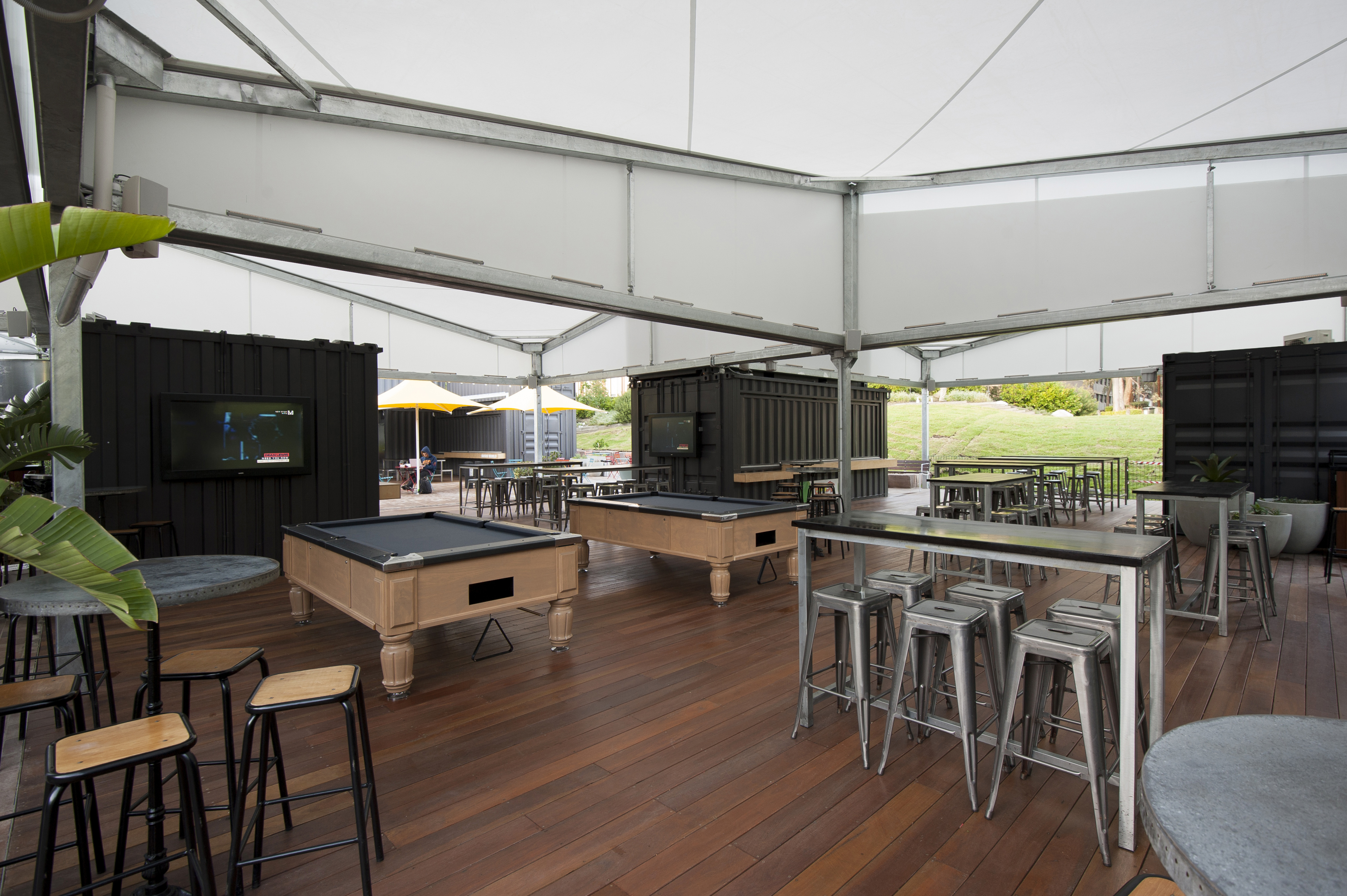
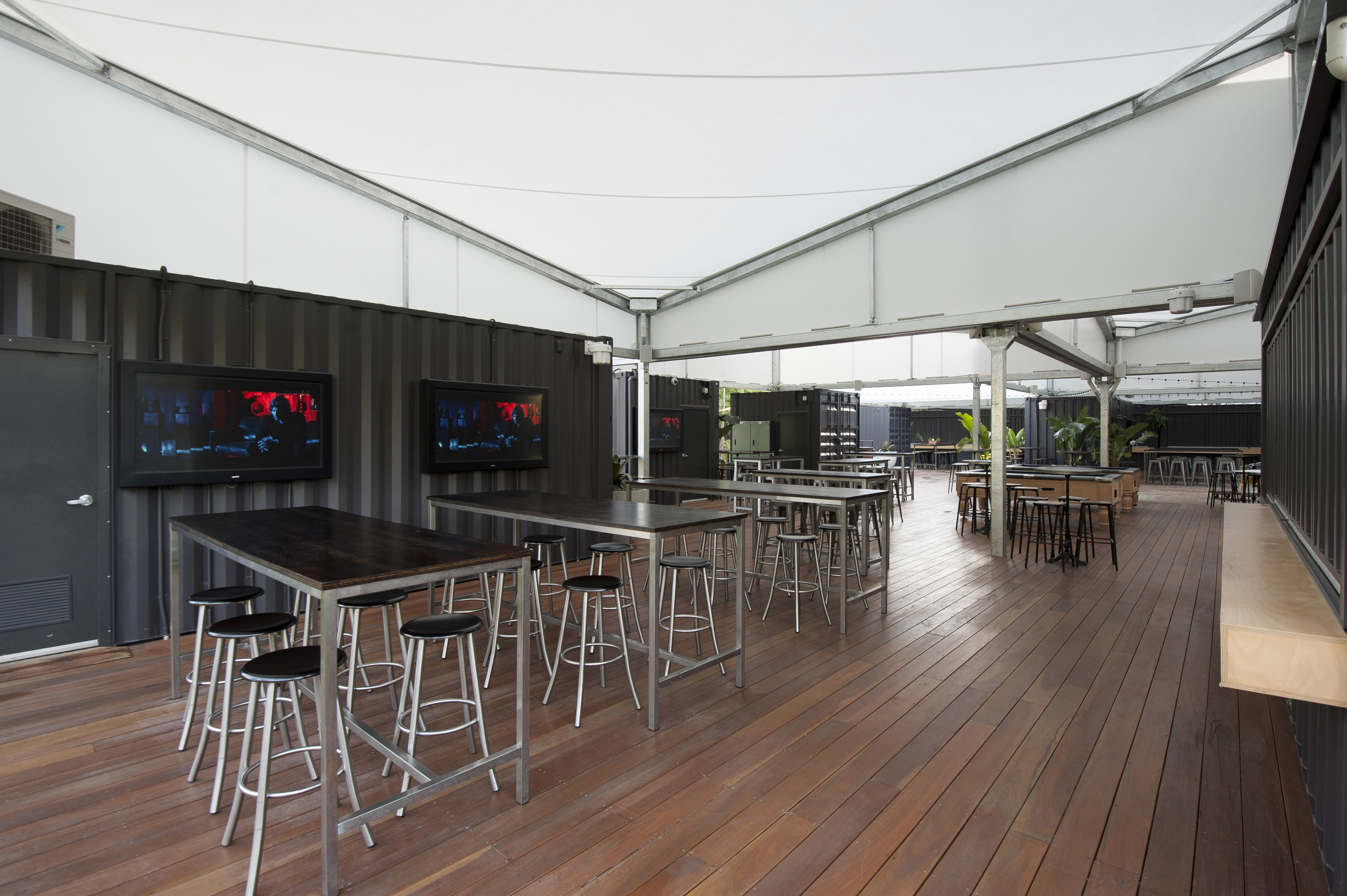
 TEXTILES.ORG
TEXTILES.ORG



